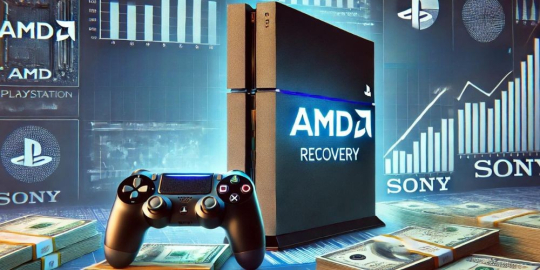
In the dramatic world of tech, few stories echo the tenacity and resilience required to avert financial catastrophe like that of AMD. It might be easy to focus on the company's current triumphs with its Zen architecture and successful EPYC processors, but the road to stability was fraught with challenges. The pivotal moment for AMD, which many might not remember, was its partnership with Sony and, to a lesser extent, Microsoft. The development of the PlayStation 4 was more than just a commercial endeavor; it was a lifeline for a company precariously teetering on the edge of collapse.
The years leading up to the PlayStation 4 were tough for AMD. Between 2011 and 2017, the company suffered from the disappointing performance of its Bulldozer-based processors. These processors were notorious for their poor single-threaded performance, and even more bizarre was the decision to focus on parallelism, which did little to enhance their appeal. Stock prices plummeted, and AMD was on the brink of financial ruin. The company even had to divest its manufacturing arm, resulting in the creation of GlobalFoundries, to stave off another potential financial disaster in 2009.
This is where the importance of the PlayStation 4 partnership comes into play. Under the leadership of key individuals like Renato Fragale, AMD entered into a crucial semi-custom contract with Sony. The development of the Jaguar APU for the PS4, combined with the GCN graphics, was a critical revenue stream. While it wasn't solely responsible for AMD's survival, it provided the essential financial buffer needed during those dark days. The PlayStation 4 outsold its rival, the Xbox One, allowing AMD to maintain a steady income and avoid the precipice of bankruptcy.
AMD's efforts weren't limited to the PlayStation 4; the Xbox One also featured a custom Jaguar APU, albeit a higher-clocked version. Though the Xbox One didn't achieve the same sales success as the PS4, it still contributed to AMD's revenue stream. This period, between the 2008 financial crisis and 2017, was one where AMD had to make drastic decisions, including selling multiple IPs like Adreno, to raise much-needed cash. The semi-custom business with console manufacturers provided a much-needed lifeline to navigate these turbulent waters.
As the dust settled and Dr. Lisa Su took the helm, AMD's fortunes began to change definitively. The Zen architecture launched in 2017 marked a turning point, making AMD a formidable entity in both the gaming and server markets. While Dr. Su's leadership and the advancements of Zen architecture were monumental, we must remember the crucial, albeit often overlooked, role of the PlayStation 4 and the semi-custom business. In the grand narrative of AMD's resurgence, the partnership with Sony and Microsoft was truly instrumental in keeping the company afloat during its most challenging times. The story of AMD serves as a compelling reminder that ingenuity, strategic partnerships, and resilience can turn the tide for any beleaguered tech giant.
